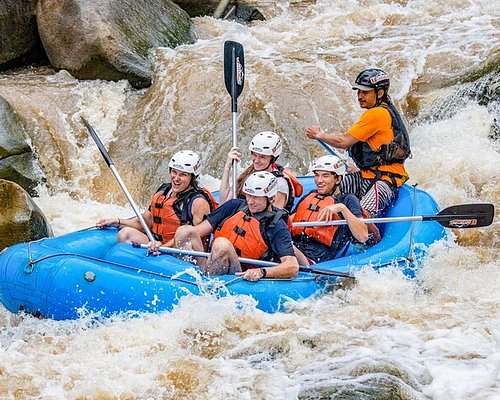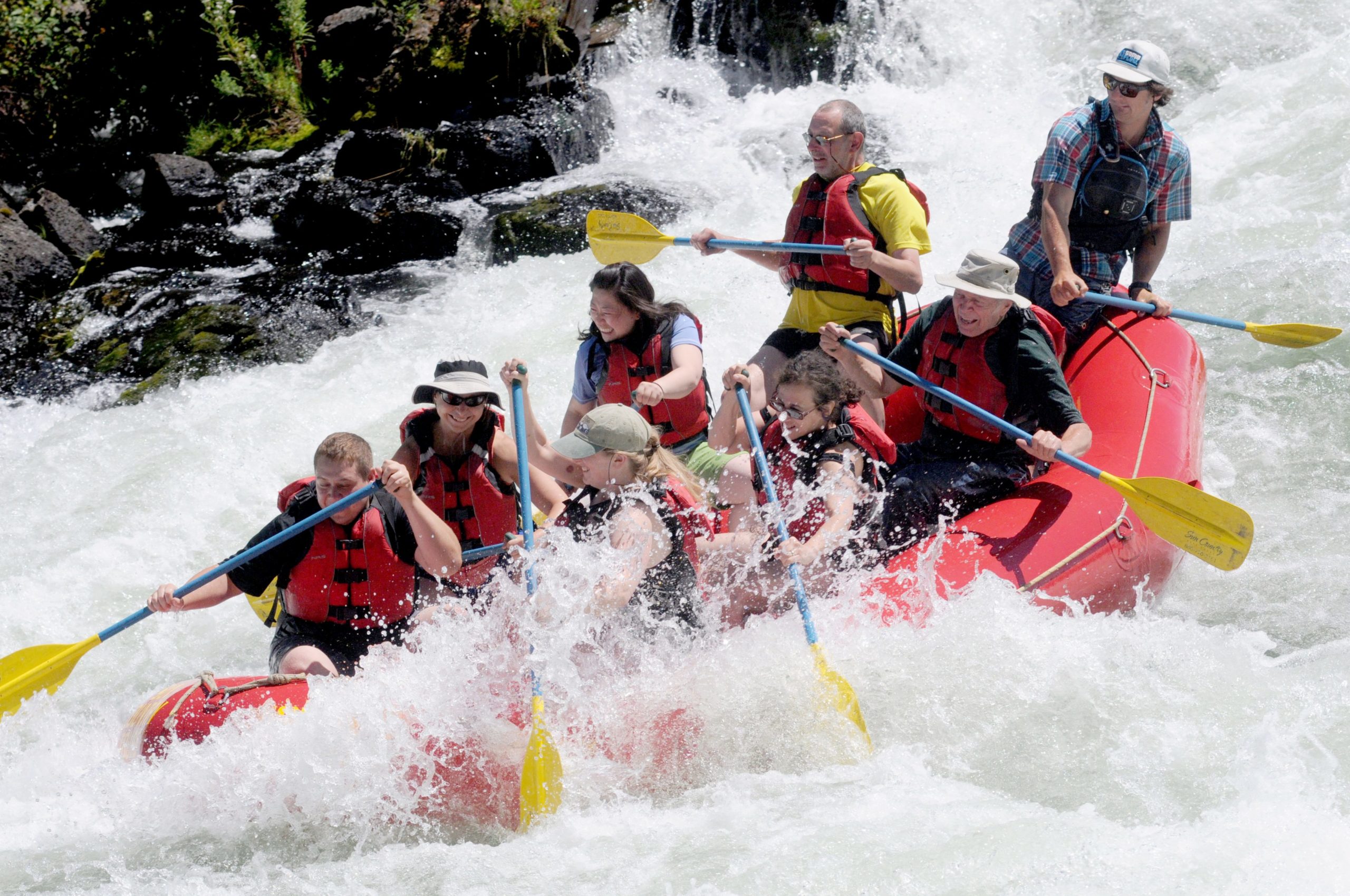Check out the Adventure: White River Raft Hire Colorado for Unforgettable Adventures
From Beginners to Professionals: Master the Art of River Rafting and Overcome the Rapids
From novices looking to dip their toes right into the globe of river rafting to skilled experts seeking to conquer the most tough rapids, mastering the art of river rafting calls for a mix of experience, expertise, and ability. In this conversation, we will certainly check out necessary equipment, picking the right river and rapids for your ability level, mastering paddling and navigation techniques, safety and security tips and precautions, as well as innovative techniques for professional river rafters.
Important Equipment for River Rafting
When planning for a river rafting adventure, having the correct essential equipment is essential for a enjoyable and safe experience. The first tool that every river rafter should have is an appropriately fitted individual flotation protection tool (PFD) or life vest. This is the most vital safety equipment as it maintains the rafter afloat in situation of an unexpected come under the water - White river Raft Hire Colorado. PFDs must be put on in any way times throughout the rafting journey.
One more vital tool is a durable and dependable headgear. Safety helmets secure the rafter's head from prospective injuries caused by ramming rocks or other things in the river. It is very important to select a headgear that fits snugly and has a strong chin strap to protect it in location.
Along with Headgears and pfds, river rafters should likewise have a paddle. Paddles been available in different lengths and materials, so it is vital to choose one that is ideal for the private and the kind of rafting journey intended. Paddles ought to be light-weight, durable, and have a comfortable hold.
Finally, river rafters ought to have ideal footwear, such as closed-toe water shoes or shoes with a secure strap. These give security and grip while strolling on slippery river banks or in the raft.
Selecting the Right River and Rapids for Your Ability Level
Picking the proper river and rapids that line up with your ability level is an essential element of preparing a safe and pleasurable river rafting experience. The primary step in choosing the appropriate river is to analyze your own capabilities and experience degree. Beginners need to opt for rivers with Class I or II rapids, which are reasonably calm and call for marginal maneuvering. These rivers provide a gentle introduction to rafting, permitting beginners to construct confidence and create fundamental abilities. As you acquire a lot more experience and effectiveness, you can progressively advance to rivers with higher difficulty degrees.
Intermediate rafters can test themselves with Class III and IV rapids. These rivers include modest to solid currents, bigger waves, and more complex barriers. Intermediate rafters have to possess strong paddling skills, the capacity to navigate with obstacles, and the capability to deal with even more difficult scenarios.
Professional rafters, with comprehensive experience and advanced skills, can tackle the supreme obstacle of Class V and VI rapids. These rivers are identified by incredibly turbulent water, substantial waves, and dangerous obstacles. Specialist rafters should have remarkable paddling skills, solid fitness, and the ability to make split-second choices under high-pressure circumstances.
When picking a river,It is important to research study and look for advice from knowledgeable rafters or expert outfitters. They can offer useful understanding right into the problem level and potential risks of various rivers, making sure that you choose a river that matches your ability degree and gives the right balance of challenge and exhilaration. By picking the suitable river and rapids, you can make sure a thrilling and safe river rafting experience.
Grasping the Techniques of Paddling and Navigation
After meticulously choosing the appropriate river and rapids that align with your ability level, the next action in understanding your river rafting experience is to establish the crucial strategies of paddling and navigating. Paddling is the main method of moving your boating through the rapids, and mastering the right techniques can substantially improve your control and maneuverability on the water.
To paddle efficiently, it is very important to maintain a solid and balanced position in the boating. Keep your feet shoulder-width apart and distribute your weight uniformly. The power for your strokes comes from your core and top body, so engage your core muscular tissues and use your shoulders and arms to generate force. Remember to keep your paddle blade vertical to the water's surface area and make use of a mix of ahead and backwards strokes to navigate with the rapids.
Navigating is one more essential ability in river rafting. It involves reading the river and recognizing its challenges, currents, and eddies. By observing the circulation of the water, you can prepare for potential risks and intend your course accordingly. Additionally, communication with your staff member is essential for effective handling. Use concise and clear hand signals or verbal commands to coordinate your paddle strokes and ensure every person is working together towards a common objective.
Security Tips and Measures for River Rafting
To ensure a enjoyable and secure river rafting experience, it is crucial to prioritize safety and take proper precautions throughout your journey. River rafting can be an exciting adventure, but it also comes with integral threats. By complying with these safety tips and precautions, you can minimize the opportunities of crashes and ensure a enjoyable and smooth adventure.
Firstly, it is vital to put on suitable safety and security equipment. Furthermore, safety helmets are crucial, particularly when navigating via challenging rapids (White river Raft Hire Colorado).

Finally, always boating with a experienced and knowledgeable guide or instructor. They will have the needed knowledge and skills to navigate the river securely and take care of any type of possible emergency situations. Pay attention to their guidelines meticulously and follow their assistance throughout the trip.
Last but not least, communicate effectively with your employee. Establish clear signals and commands to guarantee smooth team effort and coordination. Keep your team with each other and prevent unneeded more threats or feats.
Advanced Strategies for Specialist River Rafters
Professional river rafters employ advanced techniques to navigate tough rapids and optimize their enjoyment of the river. These techniques need a combination of skill, experience, and understanding of the river's characteristics. One crucial method is checking out the water, which involves translating the river's circulation, recognizing challenges, and expecting changes in the existing. By checking out the water, specialist rafters can select the most effective line to browse through rapids and avoid potential threats.

On top of that, specialist rafters are skilled at carrying out innovative rescue methods. These methods involve swift and reliable feedbacks to emergency situations, such as turning the raft back over, rescuing a fellow rafter, or performing a self-rescue in situation of being tossed from the plethora. Expert rafters are trained to take care of these scenarios steadly and properly, guaranteeing the safety and security of the whole group.
Verdict
Finally, mastering the art of river rafting requires necessary devices, picking the appropriate river and rapids for your skill level, grasping paddling and navigating methods, as well as following safety tips and safety measures. For experienced river rafters, progressed techniques are needed to browse tough rapids. By sharpening these abilities and taking necessary preventative measures, both beginners and experts can delight pop over to this site in the adventure and enjoyment of river rafting while remaining risk-free on the water.
From novices looking to dip their toes right into the globe of river rafting to skilled specialists looking for to dominate the most difficult rapids, mastering the art of river rafting calls for a combination of knowledge, experience, and skill. In this conversation, we will certainly explore crucial tools, picking the appropriate river and rapids for your skill degree, mastering paddling and navigating techniques, safety tips and preventative measures, as well as advanced techniques for specialist river rafters.Choosing the ideal river and rapids that align with your ability level is a vital element of preparing a satisfying and risk-free river rafting experience. By picking the suitable river and rapids, you can make sure a thrilling and secure river rafting experience.
In verdict, understanding the art of river rafting requires vital equipment, choosing the appropriate river and rapids for your ability level, mastering paddling and navigation methods, as well as complying with safety suggestions and precautions.